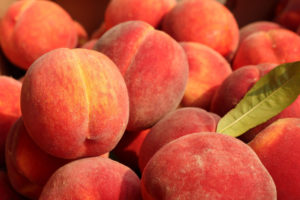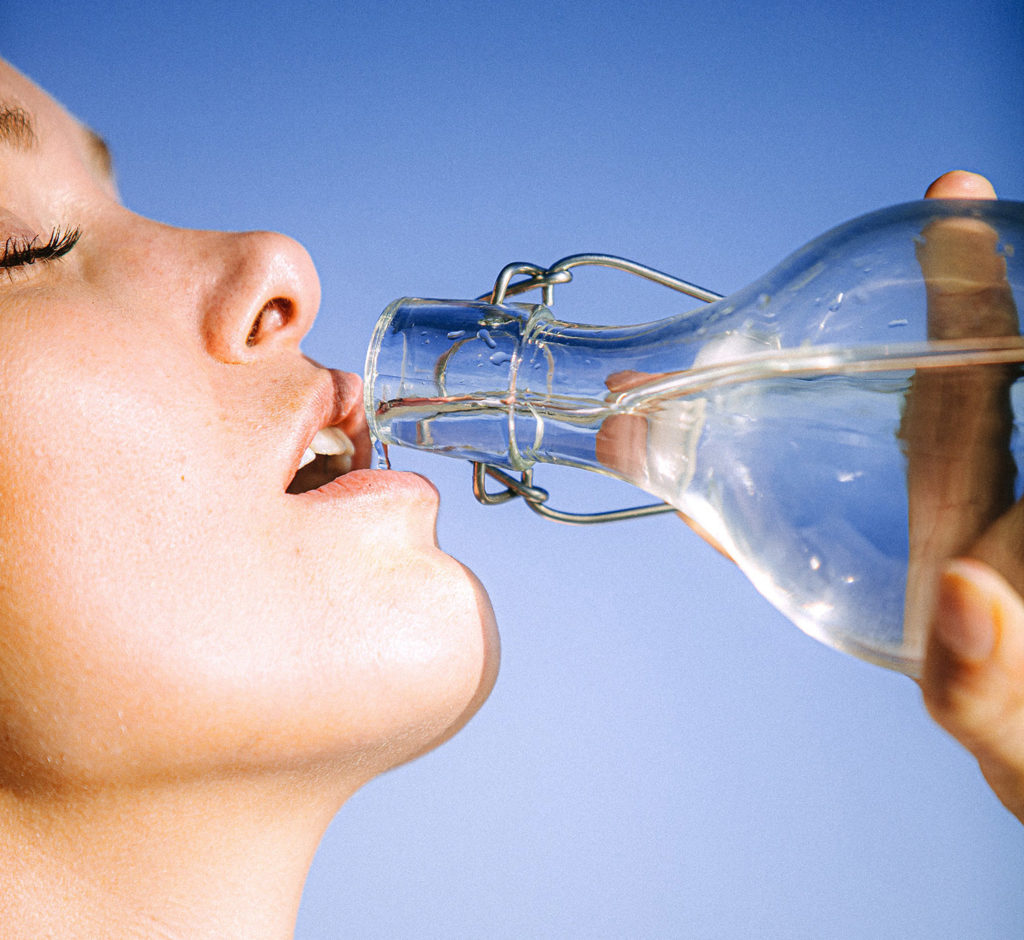Here’s To Hydration!

Staying properly hydrated is one of the keys to maintaining overall health, especially during the summer months.
Story by Ann Butenas
 Staying properly hydrated is important every day of the year, but it is highly critical during the warmer months of summer. As the temperature rises, we tend to sweat more. Our bodies routinely lose water when we urinate, and we also lose it through our intestines, lungs, and skin. Additionally, when we engage in physical exercise or other types of activities, we sweat more, which further increases the amount of water our bodies will lose. As such, we need to place a priority on adequate hydration and replace the loss of water in our bodies.
Staying properly hydrated is important every day of the year, but it is highly critical during the warmer months of summer. As the temperature rises, we tend to sweat more. Our bodies routinely lose water when we urinate, and we also lose it through our intestines, lungs, and skin. Additionally, when we engage in physical exercise or other types of activities, we sweat more, which further increases the amount of water our bodies will lose. As such, we need to place a priority on adequate hydration and replace the loss of water in our bodies.
Nearly 60% of our body is comprised of water. It is essential for all living things. It helps to supply the nutrients our bodies need as well as remove waste, maintain circulation, and regulate body temperature. Further, water helps our digestive system, cushions our joints, protects our organs, and keeps our heart stable.
Symptoms of dehydration
Without sufficient water intake, our blood pressure can drop and make us feel as if we have no get up and go at all. Further, without water, internal chaos can ensue. We may get muscle cramps, feel tired, become thirsty, lose our appetite, or even struggle with thinking and cognition. Other symptoms of dehydration include headaches, fatigue, dry eyes and mouth, constipation, and lightheadedness. If you think you are experiencing any symptoms of dehydration and/or heat exhaustion/heat stroke, seek medical assistance as soon as possible.
In order to avoid any of these ill effects, you should consume about eight, 8oz glasses of water every day. (That is the equivalent of about two liters of water.) But that is on an average day. During the summer, your intake should increase to about two and a half liters of water per day.
Stay away from sodas or caffeine-rich drinks, as those only serve to heighten the dehydrating effects. Likewise, turning to sports drinks is not a good idea because they often contain high fructose corn syrup that is not good for the liver. If you do crave variety in what you drink every day, you can opt for non-caffeinated tea, which is not only healthy but satisfying.
 Other Sources of Water
Other Sources of Water
If you are considering other beverages for hydration, it is important to note they should contain only 4%-8% carbohydrate. Before you reach for a glass of juice or a soda, bear in mind those typically contain 10% carbohydrate, which means they also take longer to absorb.
You can enjoy a piece of fruit, which supplies not only nutrients but also fiber. On average, a piece of fruit is basically 80% water. An apple is 84% water. Blueberries are 80% water, and a cantaloupe and a peach each are 89% water.
If you want to stay hydrated in the summer months through a more flavorful approach, then incorporate more fruit into your diet by slicing up some apples, pears, oranges, and bananas. Throw in some blueberries and grapes to add more appeal. Keep them ready to eat in your fridge for a tasty treat and as a great source of hydration.
General Tips on How To Stay Hydrated
- Drink water. Have a glass of water upon awakening each day, have a glass with every meal, and enjoy a glass before bedtime. Be sure to drink one or two cups after a workout and strive to sip water throughout the course of the day.
- Recognize the signs of dehydration. In addition to the other symptoms previously mentioned, your skin may also become dry, irritated, and itchy. Be sure to get out of the heat and drink some water if you begin experiencing any ill effects. If your dehydration appears to be severe call your health care professional or dial 911.
- Avoid alcohol, sugar-laden drinks, and caffeine. Drinks full of sugar, sodium and other ingredients will not hydrate your body. In fact, they remove water from your tissues.
- Consume foods with a high-water content. As noted, foods with a high level of water will help you stay hydrated and can also include cucumbers, tomatoes, celery, radishes, watermelon, strawberries, spinach, and grapefruit. Staying hydrated can be quite tasty!
- Stay cool. In the warmer months of summer, opt for lighter-colored, loose-fitting clothing and limit strenuous activity to the cooler times of the day. Wear a hat and sunglasses and take regular sips of water during the course of the day.
- Examine your urine. The darker in color your urine is, the more dehydrated you are. Pale urine indicates good hydration. Dark yellow or amber colored urine indicates a level of dehydration. Certain medications can affect the color of your urine, so if you have any concerns in this regard, please speak with your healthcare provider.
- Replenish after you sweat. If you’ve been on a power walk or out playing tennis, for example, you need to replenish what you lost in terms of water. The American Council on Exercise recommends the following:
- Drink 17-20 oz. two to three hours before you exercise.
- Drink 8 oz. 20-30 minutes before you exercise.
- Drink 7-10 oz. every 10-20 minutes during exercise.
- Drink 8 oz. no more than 30 minutes after exercise.
According to the Centers for Disease Control and Prevention, recommendations for daily fluid intake do vary by age and sex and also for those who are pregnant and/or breastfeeding.
Always remember to stay cool, safe, and well-hydrated throughout the summer and all year long, and as with any health issue, your best source of information and guidance can be found through your health care provider.







